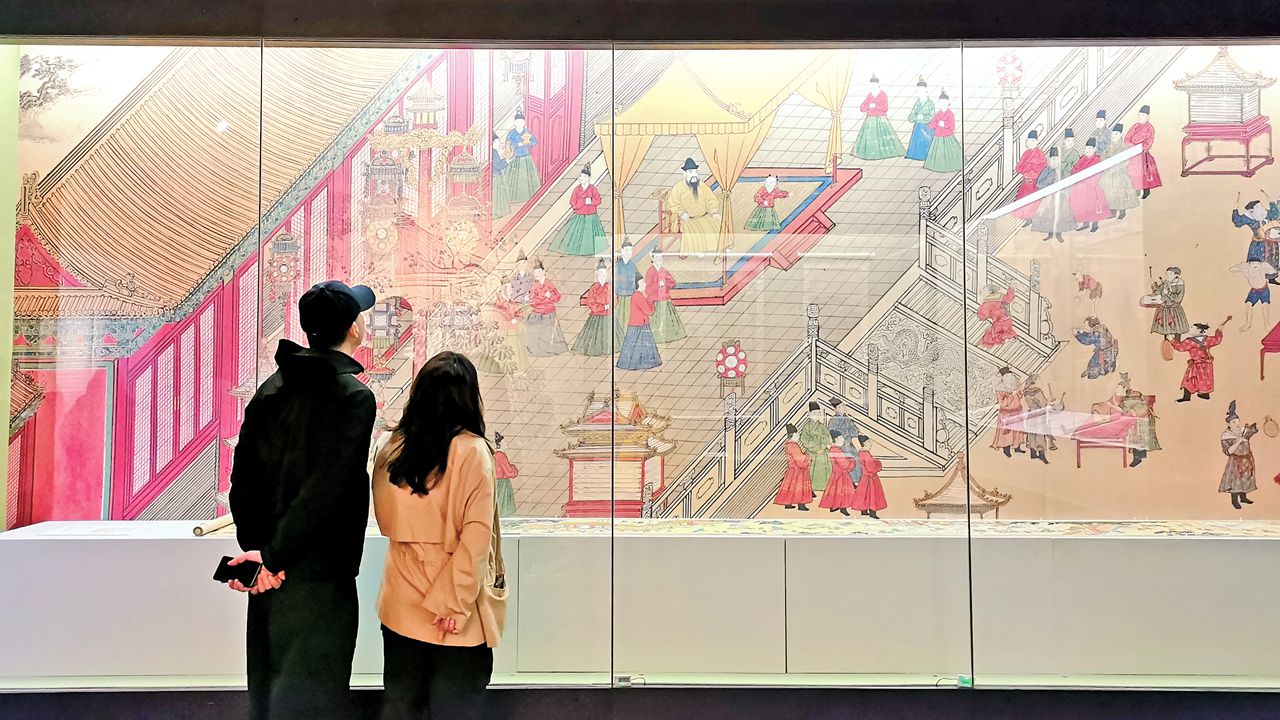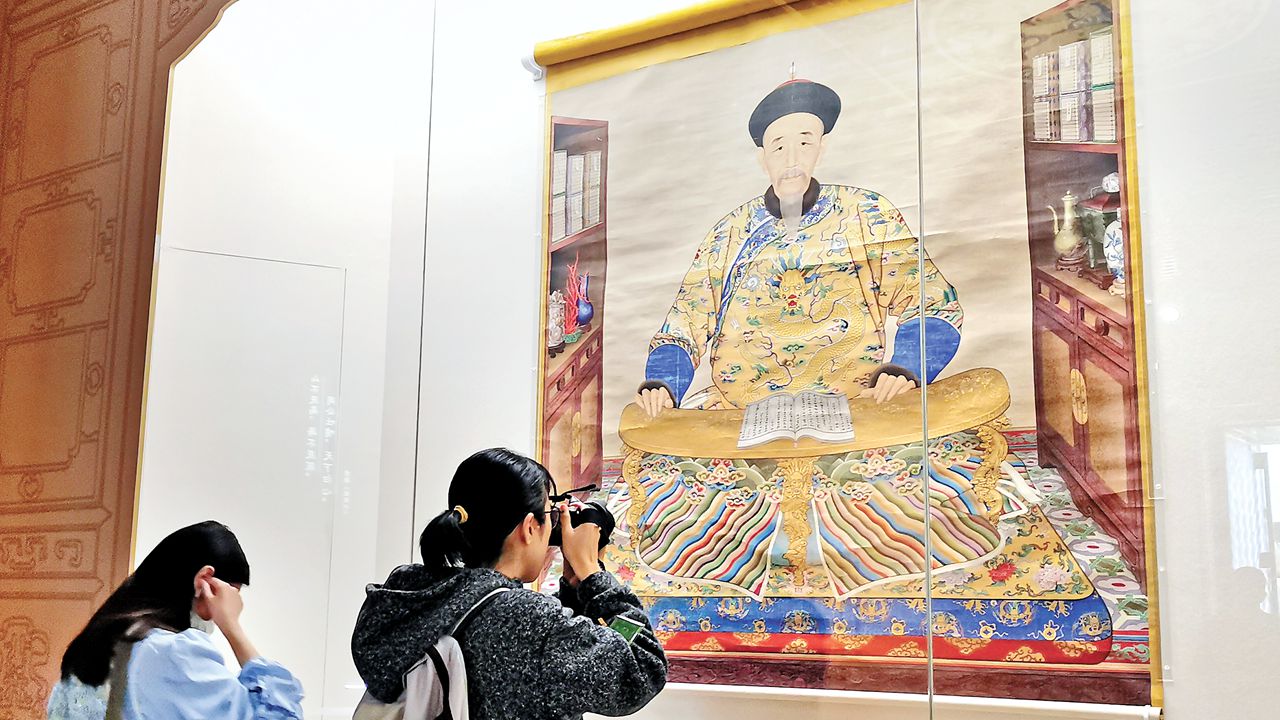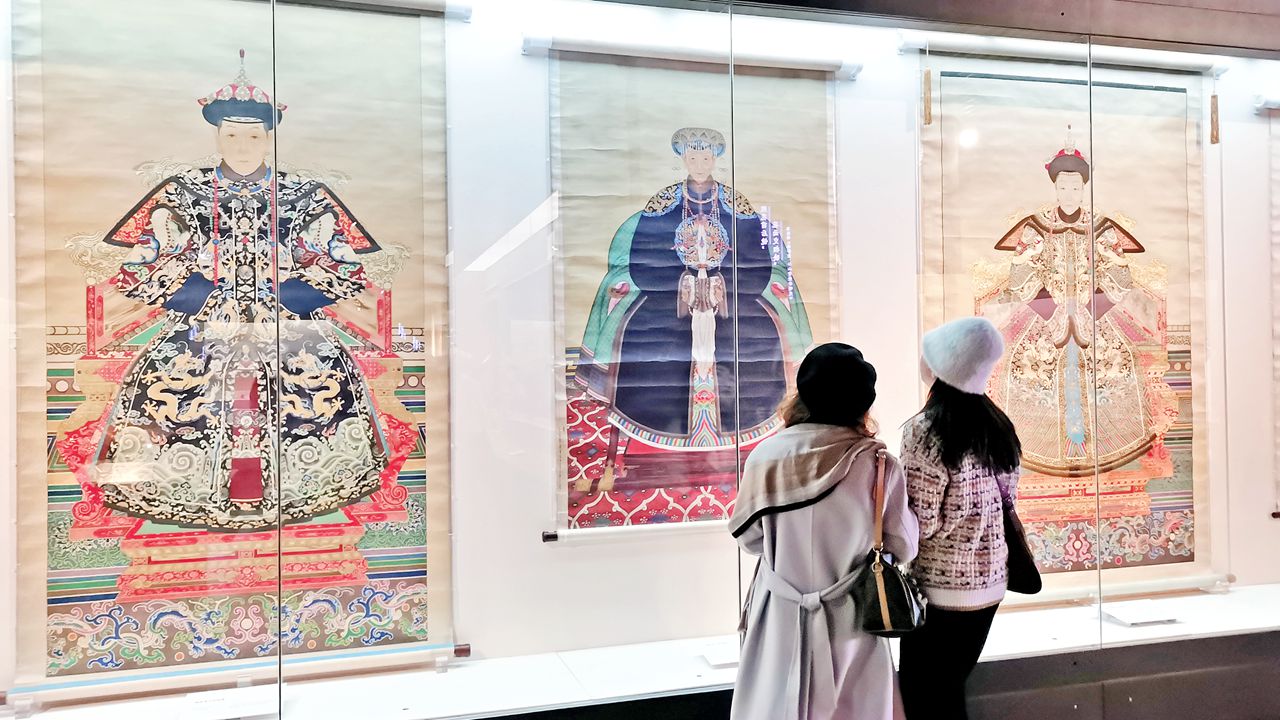National museum brings rare portraits to SZ
Writer: Cao Zhen | Editor: Zhang Zhiqing | From: Original | Updated: 2025-01-02
This winter, you don’t need to travel to Beijing to view rare artifacts from the National Museum of China — one of the country’s most visited museums — since it has brought a precious collection of ancient Chinese portrait paintings to the Shenzhen Museum’s History and Folk Culture Division.

Visitors observe the original painting alongside an enlarged copy that depicts the Lantern Festival in the Ming Dynasty court. Photos by Cao Zhen
The exhibition, running through March 30, features 131 portrait paintings created during the Ming (1368-1644) and Qing (1644-1911) dynasties, featuring figures from imperial families, notable officials, and literati. These paintings not only carry the stories of those historical figures but also convey information about politics, etiquette, art, folk customs, and clothing, enriching visitors’ understanding of the social and cultural landscapes of their eras.

A visitor takes photos of a painting of the Qing Dynasty Emperor Kangxi at the Shenzhen Museum.
In the full-length portraits of figures such as Tang Dynasty (618-907) emperor Li Yuan, Song Dynasty (960-1127) emperor Zhao Kuangyin, and Qing emperor Kangxi, viewers can appreciate their imposing and noble postures as they don magnificent robes. The varying portrait styles across different periods offer insight into the evolving artistic expressions of the time.
Paintings that depict gatherings of literati or leisure scenes from imperial life provide a glimpse into the spiritual pursuits, beliefs, and aesthetic tastes of various social classes. The expressions, clothing, and settings evoke emotions and prompt viewers to ponder the lives of those depicted.

Visitors admire paintings featuring ladies in the Qing Dynasty imperial families.
Visitors can engage with the historical figures in a fun and informative manner through interactive screens at the exhibition. A variety of public educational activities, lectures, and workshops will be held during the exhibition. Follow the Shenzhen Museum’s WeChat account (ID: iszbwg) to stay updated on event sign-ups and activities.
Venue: Shenzhen Museum’s History and Folk Culture Division, Futian District (深圳博物馆历史民俗馆)
Metro: Line 2 or 4 to Civic Center Station (市民中心站), Exit B